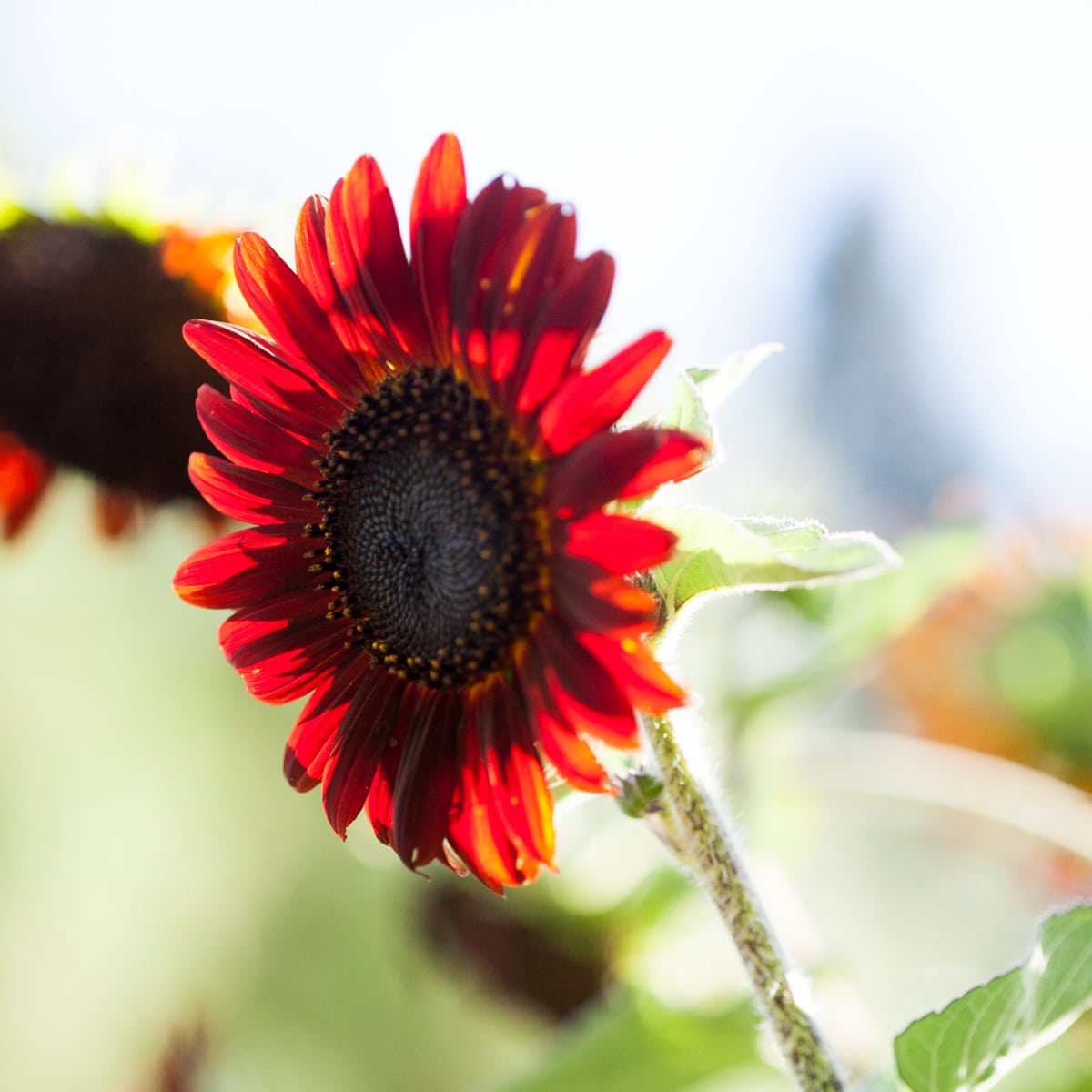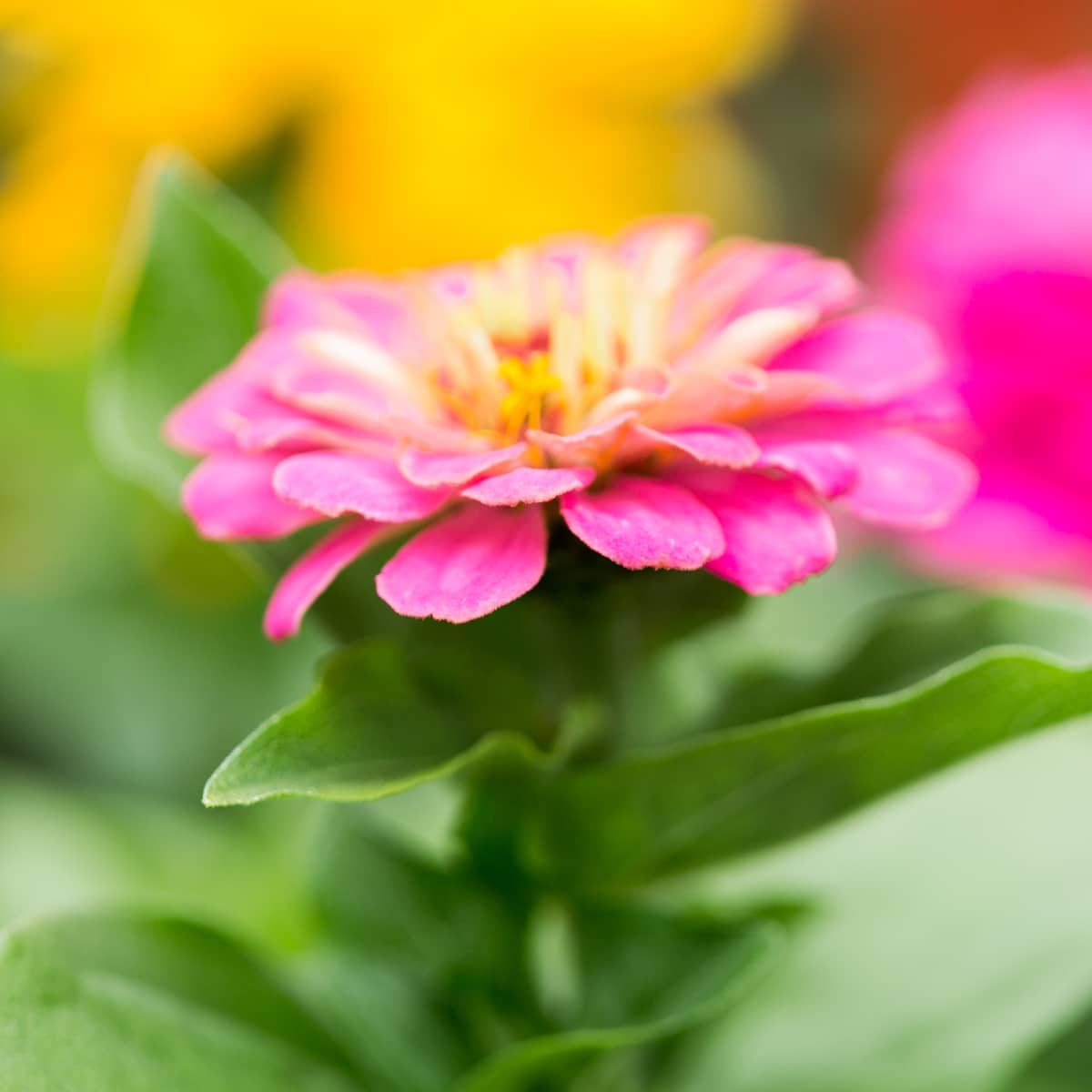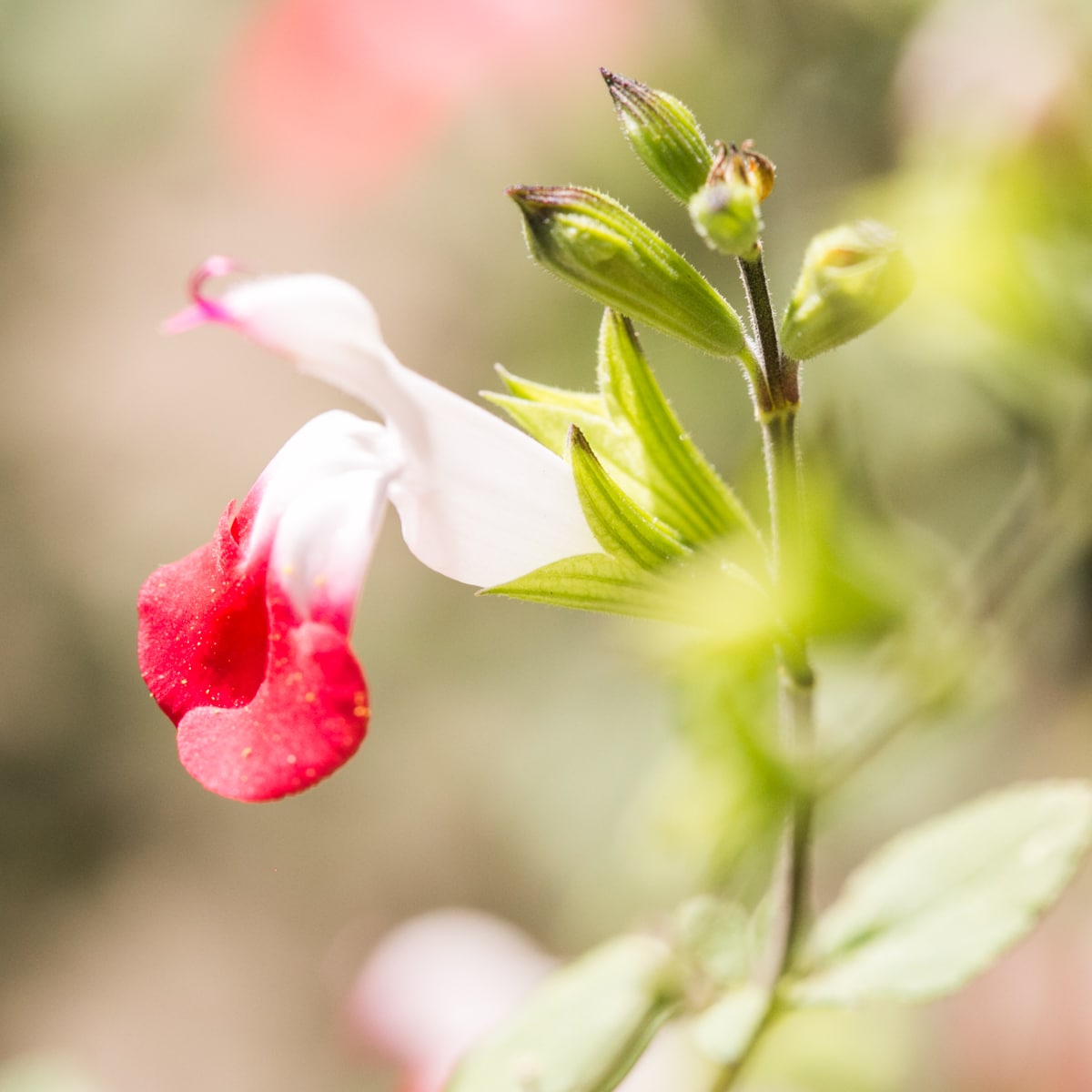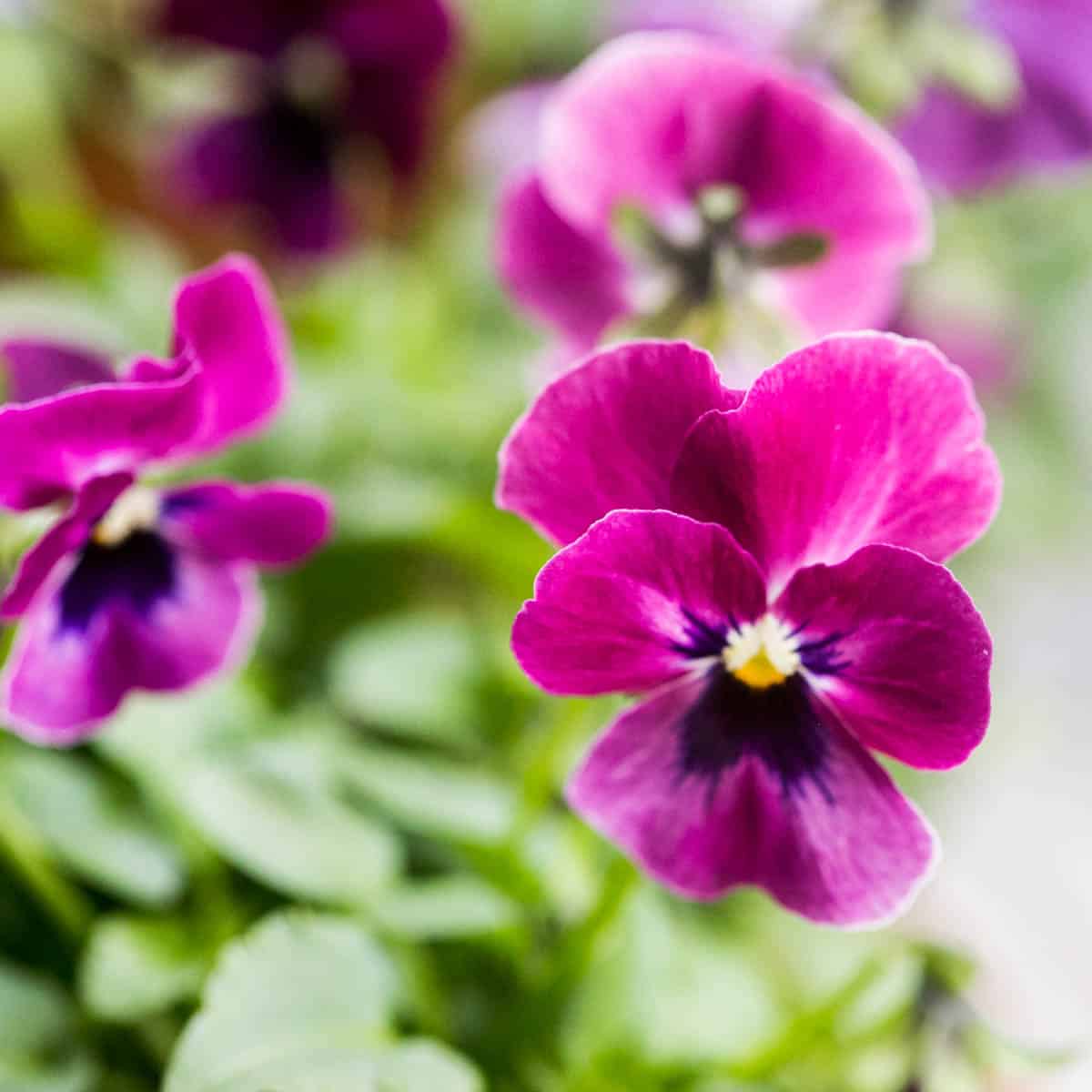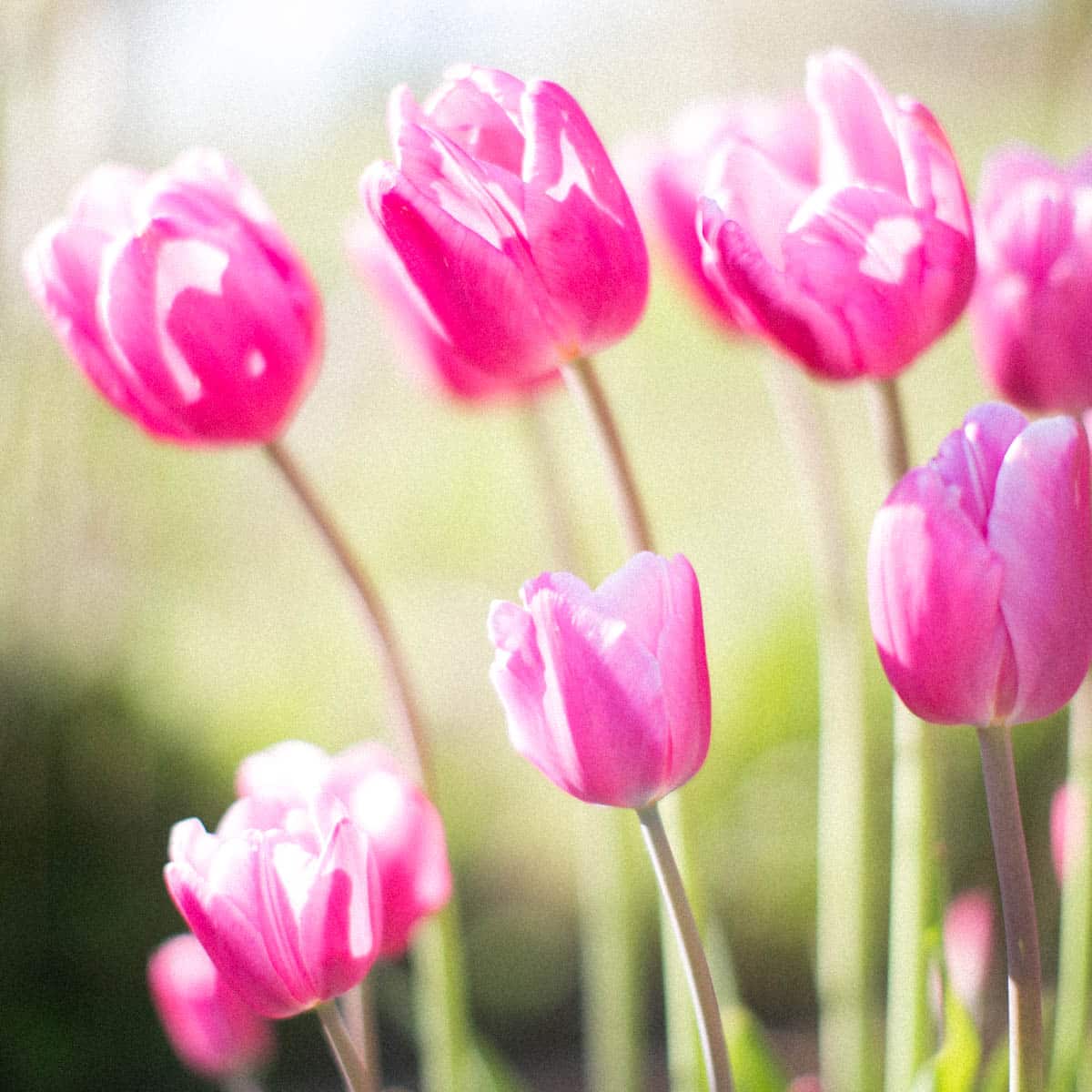How To Deadhead Marigolds: Easy Steps For More Flowers!
Learn how to deadhead marigolds in just a few easy steps!
Do you want more marigold flowers this year? A simple way to increase new blooms is to simply remove the spent flowers. Luckily, deadheading marigolds is one of the easiest garden tasks there is.

Join us as we explore how to easily remove the spent flower heads of your marigold flowers, with a few extra marigold growing tips thrown in for good measure!
Marigolds are gorgeous, and they WILL bloom all summer long if you remove the dead flowers correctly!
How To Deadhead (Pinch) Marigolds
Deadheading marigolds is also referred to as “pinching” marigold flowers. This easy process involves identifying and removing the flower blooms throughout the season.
To deadhead faded marigold flowers follow these amazingly simple steps:
- Identify the faded marigold flower. It will look discolored and petals may be falling off
- Locate the first sets of leaves below the flower head
- Cut the flower just above this first set of leaves (remove both stem and flower)
- Remove any dead or diseased foliage and dispose of foliage away from plants
- Discard spent flower head and stem or save flower head seeds for future use!
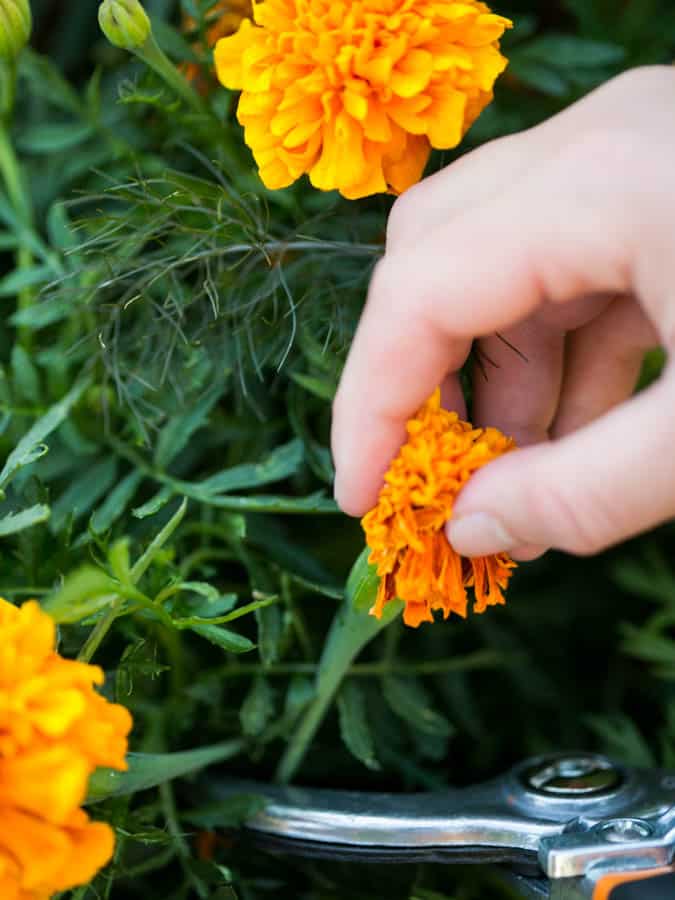
Note: A lot of gardeners advocate to remove JUST the flower head. While this can work to remove the spent flower bloom, it will not encourage your plant to grow more stems.
The result is LESS flowers produced overall. When you pop the flower head off the end of the stem, the left over flower stem is just a waste of space for the plant!
So be sure to remove the flower head and stem at the base of the leaves. This will give you a fuller plant with lots of flowers.
See our article on harvesting and saving marigold seeds here!
*this post contains affiliate links. If you click through a link and make a purchase, we may make a small commission at no extra cost to you.
Supplies Needed
You do not need any fancy tools to deadhead marigolds! Just a few basic supplies:
- Pruning shears
- (or) Scissors
- Gloves
Choose either pruning shears or scissors to gently snip off the end of the flower bud. Some people prefer to use their fingers to pinch the flowers off, but we have found that this can damage the plant. Using a small pair of scissors or shears helps reduce damage.

Marigolds have a very specific, strong scent and may cause skin irritation. You may want to wear gloves to protect your skin and keep your hands odor free.
(The marigold scent is what helps this repel deer and rabbits!).
Always make sure your deadheading tool is clean. You can easily clean your tools by dipping them in alcohol and drying with a rag.
Marigolds are available in orange, red, white and yellow flowers. These beautiful bloomers put out lots of flower buds each year. They are easy to grow and thrive both in flower beds, containers, and small pots.
*View our web story on deadheading marigolds here!
When To Deadhead Marigolds
Marigolds can be deadheaded throughout the entire growing season, starting in early summer. The best time to deadhead marigolds is in the morning when watering your flower beds.
Since you are out there anyway, you can quickly check on each plant to see if it needs deadheaded. This is a great time to deadhead zinnias, petunias and dahlias, as well!
Marigolds will produce hundreds of flowers without much effort, so be sure to make regular time to remove those faded blooms!
Signs that the marigold flower is ready to be pinched:
Signs that the marigold flower is ready to be deadheaded:
- The flowers start to look discolored, faded or spent
- Flower petals may be falling off
- The flowers are dry and seeds are readily visible

Regularly check your marigold plant for spent blooms. Staying on top of this task will give you more flowers AND help keep your plant healthy. Both potted marigolds and plants growing in flower beds will benefit from being deadheaded.
Keep deadheading plants until the end of the season. Marigolds will bloom all the way up until first frost.
Types Of Marigolds To Deadhead
Ranging in color, height and form, there are over 50 varieties of marigold flowers.
There most common varieties of marigold flowers are French marigolds and African marigolds.
Marigolds are typically available in late spring at garden centers and nurseries. Both can be deadheaded easily by snipping the flower stem above the first set of leaves.

Is It Necessary To Deadhead Marigolds?
If you want more flower blooms from your marigold plant it is essential to deadhead them regularly. If you do not deadhead marigolds they will put their energy into seed production for the following year.
Deadheading faded flowers will encourage the marigold plant to put it’s energy into fresh blooms. It will also promote the healthy growth and a full plant.

Regularly deadheading your marigold plant and removing dead blooms will give you beautiful flowers all summer long.
If you don’t want more flowers, however (but who would that be!?) you do not need to deadhead marigolds. The plant will put it’s energy into creating seeds for the following year.
The benefits of deadheading marigolds: Deadheading marigolds not only encourage lots of new blooms, it keeps your plant looking lush and healthy. Deadhead flowers and removing damaged foliage improves the overall look of your flower beds!
Did you know? Marigolds are an excellent addition to the vegetable garden. These beautiful bloomers are easy to care for and deer resistant. They also repel pesky bugs like mosquitoes and attract beneficial pollinators, like bees!
How Do You Keep Marigolds Blooming All Season?
Keep marigolds blooming all season by removing the spent flowers regularly. For best results check your marigold plants a few times a week and remove the spent or faded flowers as you see them.
This will stimulate the plant to put more and more energy into growing new blooms!
Marigolds are one of those lovely annuals that will flower all summer long. Be sure to keep them deadheaded for more blooms!
What Happens If You Don’t Deadhead Marigolds?
When marigolds aren’t deadheaded, the plant put it’s energy into the seed pods. The seed pods contain seeds that will grow into flowers next year! The plant is doing it’s job to ensure the plant species survives by creating additional plants of it’s own kind.
The dead flower head is the location for the seeds. When it is not removed the plant puts energy into these seeds instead of into the new blooms.

When marigolds aren’t deadheaded, they produce fewer blooms. Since the job of the plant is done, the flowers begin to fade. These dead heads will eventually drop, along with the seeds. This is how more marigold plants spread, ensuring more plants the next spring.
Essentially, this is the life cycle of a marigold plant.
When you remove the flower heads you are encouraging the plant to put it’s energy into new blooms.
How To Harvest Marigold Seeds
Read our step by step guide to saving marigold seeds here!
Did you know that seeds can be quickly and easily harvested from spent marigold blossoms? These seeds can be started indoors in early spring to give you a head start on your marigold plants.
Simply shake the seeds from the flower head and store them in a paper envelope or plastic bag. Store them in a dry place over winter.

What Month Do Marigolds Stop Blooming?
Marigold flowers will stop blooming when frosts hit in October or November.
Marigold flowers will bloom all summer, up until frost hit in fall. This may be October or even early November, depending on what zone you live in. Marigolds are not frost hardy, so you will need to re plant them the following spring.
How Long Do Marigolds Last?
Marigolds can flower from early spring all the way up until the first frosts of winter!
Marigolds are typically grown as annual plants. This means that they will bloom for one season and die when frosts and cold hit in fall.
Marigold Growing Tips
Marigolds attract pollinators like bees and butterflies to the garden. They are SO easy to grow and are the perfect companion plants for a kitchen garden. Here are a few tips on growing marigolds. Tend to their simple needs with these tips:
Light
Marigolds prefer full sun locations! Plant them in 6-8 hours of sunlight (or more). The more sun the flowers receive, the better they will bloom. (It’s always a good idea to plant your flower garden in a full sun location- and your veggies too! )
If marigolds do not receive enough light, they will not produce very many blooms. You will have a marigold plant featuring just foliage!
Water
Once established, marigolds are somewhat drought resistant and need to be watered about once a week. Increase watering during very hot weather and check to make sure the soil is dry during cool, rainy weather.
Water new plants frequently for the first few weeks as they become established. Young plants need a couple of weeks to establish their roots deep within the soil. After that, marigolds are somewhat drought tolerant!
Soil
Marigolds are an easy to grow plant that can thrive in moderate and even poor soil. The soil MUST be well draining, ensuring that water does not sit on the roots.
The best soil for marigolds is loamy and well draining. Avoid heavy clay soils that stay water logged.
Fertilizer
Marigolds are not heavy feeders and can thrive if they are given nutrient rich, well draining soil. These versatile plants can produce healthy growth in moderate to poor soil, so don’t worry too much about giving them flower fertilizer! (Well draining soil and direct sunlight are essential for marigolds, however!!).

Wit+Wisdom
Marigolds are known for attracting beautiful beneficial insects! They are our friends in the garden, bringing life by attracting pollinators to fruits + vegetables!
“Marigolds are like the sun on earth, bringing light and warmth to everything around them.” – Unknown
FAQ’S
Marigolds bloom for long periods (all through summer) and will flower all the way up until the first front in fall!
Keep your marigolds deadheaded in order to encourage more and more blooms and a full, healthy plant.
Marigolds will keep blooming all summer long if deadheaded correctly. By removing the faded flowers you encourage the plant to keep producing blooms.
If you don’t deadhead marigolds they will put their energy into the seed pods and will not produce a lot of blooms. Removing the spent blooms encourages the growth of more flowers!

How To Deadhead Marigold Blossoms: Final Thoughts
Marigolds light up the backyard garden each spring with vibrant blooms in shades of orange, yellow and red. These wonderful flowers will produce lots of new buds when deadheaded correctly.
The best way to deadhead marigolds: simply cut marigold flowers and their stem at the first set of leaves. Each time you visit your garden, give your marigold plants a little bit of love by checking in with to see if they have any spent flowers to remove! New growth will soon emerge as your plant puts it’s energy into growing more flowers!
Regular deadheading of marigold flowers will give you the most new flowers.
Thank you for stopping by to learn all about deadheading marigolds! We’d love to help you on your gardening journey. If you have any questions, drop them in the comment box below.
Shop This Post:
- Our favorite gloves
- Small pruning shears
- Scissors for pruning
- The best watering wand

